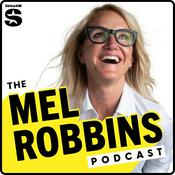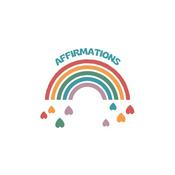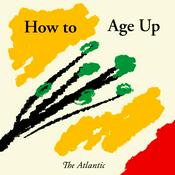Rescued: An Outdoor Podcast for Hikers and Adventurers
Caro Ryan

Latest episode
Available Episodes
5 of 19
- 018 // Bram's pelvis opens like a book in a remote Taiwan canyonThe things we love to do in nature can lead us to explore and discover places not just close to home, but to some very remote and uncharted places around the world.These activities, like bushwalking/hiking, climbing or canyoning, give us opportunities to step outside the typical tourist or visitor experience, not only opening our eyes to cultures different to our own, but on a deeper level, the chance to connect with the local outdoor community through our shared love of wild places.In this special double episode of Rescued, we hear from 3 friends, all highly skilled and experienced canyoners, as they find themselves in the embrace of Taiwan’s small and dedicated canyoning and rescue community, after a life-threatening fall during a multiday expedition.If you ever needed a reminder of the value of regular, high-quality wilderness first aid training and the importance of being able to rely on the people you adventure with - this is it.This isn't a straightforward pack n’ send case of helicopter, paramedics and hospital. Their reliance on each other, their skills and a solid sense of humour is put to the test throughout this 2 day ordeal.Key learnings from this episode: The importance of having the right skills, training and experience for the environments The ability to make fair self-assessments of the above Planning is key to better outcomes Research multiple contingency plans, if your exit from a canyon doesn’t work, are there alternatives you can see on satellite imagery? Plan refuge and camp spots Being able to rely completely on your adventure buddies if something goes wrong. Q: Can you say this about strangers you connect with on MeetUps or similar?) Value of research, local knowledge and connections Huge thanks to the incredible and supportive local canyoning community of Taiwan Being smart about choosing your emergency contacts and setting up a What’sApp group - briefing them all properly with plans, contingencies and giving them permission to act as your advocates if something happens The essential recert and muscle memory of quality wilderness first aid training Benefits of choosing to study Wilderness or RAFA over simple Senior First Aid Brainstorm and practice of roping and rescue problems at home and in easier environments before being confident to execute them in challenging ones Good open, inclusive and frank communication in and around a patient How humour can help with stressful situations Everyone knowing their job and getting it done How party size can change outcomes in an incident Importance of essential survival skills eg: fire making, knowing priorities for survival Stove, lighters and Nalgenes as essential canyon equipment Making sure your first aid kit is up-to-date (when was the last time you made sure you had enough panadol and ibuprofen?) Bright clothes, bothy bag, emergency blankets to draw attention Knowing how to prepare for helicopters and downwash Aussie registered PLBs activated overseas are received by AMSA in CanberraThere's a bunch of different ways you could help support the work of this pod: Leave a review on your platform of choice Leave a donation towards the costs Visit my sponsors at Paddypallin.com.au Buy my book - "How to Navigate - the art of traditional map and compass navigation in an Australian context." Check out my Navigation Courses--------52:02
- 017 // Make good decisions with Hugh Ward - HeuristicsHow many decisions do you reckon you’ve made today?It's probably the conscious ones that come to mind. Do I wear the red shirt or blue top? 1 coffee or 6.Believe it or not, The Harvard Business Review states that adults can make around 35,000 decisions each day and many of those happen automatically and simultaneously.When we head out into the wild places we love, or find ourselves in environments with a higher level of risk, some of these decisions (conscious or otherwise) can have some pretty intense consequences.Today, I’m joined by Hugh Ward, co-owner of the Blue Mountains Climbing School, to learn about an easy tool that we can use every day, to help us make better decisions, smarter choices and have better adventures.He talks us through the established acronym F.A.C.E.T.S, developed by Ian Mcammon, based upon the work of Daniel Kahneman and Amos Tsversky. It was designed to highlight common deficiencies in our decision making (Heuristic Traps) and to offer a tool to temper the choices we make in high consequence environments.Excitingly, he then steps us through a NEW acronym, A.C.C.E.S.S. that he has developed with Climbing School co-owner and wife, Bridie Campbell, that works better with Australian outdoor environments. You can read more and DOWNLOAD their handy pocket guide here.ResourcesArticle on the Climbing School blog--------58:02
- 016 // Macca is broken in a big wall fallIt was the ABC News that first alerted the outdoors community to Macca's big wall fall near Blackheath in the Blue Mountains of New South Wales. With over 30 years climbing under his belt, including many first ascents and stories, some of which are the stuff of legend, he is one of the Blue Mountains climbing community's most well-known characters. Five years on from the accident, he joins me today with Sergeant Dal Atkinson, the team leader of Blue Mountains Police Rescue Squad, to speak about what happened and what the challenges of location, access, and weather made this one of the longest and most difficult cliff rescues in New South Wales.https://youtu.be/IVtaK-v99jM--------1:08:36
- 015 // Dr Paul Luckin is an expert on human survivablity - Part 2Dr Paul Luckin is an authority on human survivability. He’s a medical advisor to the Police Search and Rescue teams and the Australian Maritime Safety Authority (that’s AMSA), providing time-frames for human survival during Search and Rescue operations.In part 2 of my conversation with Paul, we look deeper into demographics and practicalities of surviving in the wild. What should people do if in that situation and ask what can be done to help get these messages across.--------37:45
- 014 // Dr Paul Luckin is an expert on human survivabilityDr Paul Luckin is an anaesthetist, with a very unique background.As an authority on human survivability he’s a medical advisor to the Police Search and Rescue teams and the Australian Maritime Safety Authority (that’s AMSA), providing time-frames for human survival during Search and Rescue operations.He teaches the medical aspects of Search and Rescue, and is on the directing staff of the National Police Search and Rescue Managers Course.A humble and highly trained specialist clinician and expert in search and rescue, he has served as a Captain in the Royal Australian Naval Reserve in Bougainville, East Timor, in the Resuscitation and Retrieval Team for the victims of the first Bali bombing, and in the first foreign medical team into Banda Aceh following the 2004 tsunami, and much, much more.In 2015, he was made a Member of the Order of Australia, AM, for significant service to thecommunity through emergency medicine, and he joins me today…--------42:00
More Education podcasts
Trending Education podcasts
About Rescued: An Outdoor Podcast for Hikers and Adventurers
'Rescued' is a podcast of conversations with the rescued and rescuers. It's about the lessons we learn about ourselves, the places we go to and why. It exists to help us have better adventures and experiences, manage risk and deal with the unexpected.
Podcast websiteListen to Rescued: An Outdoor Podcast for Hikers and Adventurers, Begin Again with Davina McCall and many other podcasts from around the world with the radio.net app

Get the free radio.net app
- Stations and podcasts to bookmark
- Stream via Wi-Fi or Bluetooth
- Supports Carplay & Android Auto
- Many other app features
Get the free radio.net app
- Stations and podcasts to bookmark
- Stream via Wi-Fi or Bluetooth
- Supports Carplay & Android Auto
- Many other app features


Rescued: An Outdoor Podcast for Hikers and Adventurers
Scan code,
download the app,
start listening.
download the app,
start listening.





































